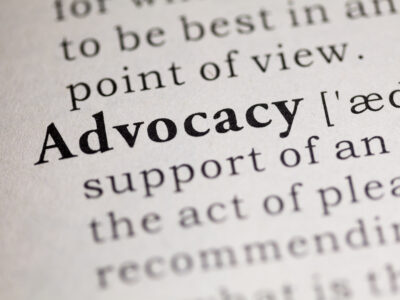
Branding: a word we usually hear used when talking about for-profit businesses and the ways in which companies communicate and give visual representation (all while turning a profit). However, branding is an important aspect of all businesses, from large corporations and grassroots organizations to nonprofits and more. Your brand is the image (whether you’re using actual images or words) that people visualize or feel when they think of your organization.
In our work with nonprofits, we realize that sometimes there are scarce resources that make it harder to focus on brand strategy among the many other things you’re charged with doing. Nonprofits have such great stories to tell that branding can (and should) be something that is at the top of the list for getting right each year.
If you’re struggling to get started with setting your nonprofit’s brand strategy, here are 4 reasons your nonprofit needs a solid brand strategy (and some tips on how to work on it):
1. Prioritize your visual brand in your brand strategy.
Your brand is the first and last thing your audience will think of when they engage – or, dare I say, choose to disengage – with your nonprofit. Your logo, imagery, website, services and products make up the visual brand. These components must cohesively communicate the message of the organization. Where would McDonald’s be without those famous golden arches? Without the swoosh, Nike would be just another type of sneaker.
You have the power to shape how people view your organization, and that power can (and will) dictate the course of your donor engagement and fundraising efforts.
Allée advice: Your brand should differentiate your organization from the hundreds like it, or people will have little reason to support yours over your competitors. Do brand research across your target audiences to see what works for them and what is working for your competitors. Don’t cut corners on design, either – a good visual brand starts with a high-quality design. Your aim should be to present every single component of your nonprofit with a consistent image. Do this and you’ll be unforgettable.
2. Be cohesive with your communications strategy.
In a world where we are inundated with messages, it can be very easy for organizations to go in various (and sometimes opposing) directions with their communication strategies. The most integral way to structure your nonprofit communications strategy is to implement one consistent message for your brand and channels. Use similar verbiage, slogans, and verbal imagery throughout your messaging. Stick to stories that communicate your mission and the good you are doing. Tell one story and make it a good one.
Allée advice: When planning your brand strategy, make sure to create a list of specific phrases, images, mottos, quotes, keywords, etc. Utilize content calendars to keep your communication organized and to visualize where all pieces will be distributed in a cohesive document. For social media, this includes listing out specific hashtags and handles that you want to use consistently and/or engage with online. We like to call these “source lists”. This type of organization can serve as a guide for any and all content you create for your nonprofit over time.
3. Broadcast the ways your nonprofit is integral to social responsibility.
The values of an organization – whether they be political, ethical, or otherwise – have rapidly become one of the most important and broadcasted components in the eyes of consumers. People are no longer blindly throwing their money away; they are being deliberate about supporting only those businesses and organizations whose values they align with. Prioritizing a high-quality and consistent brand strategy gives a face to your organization and helps create an authentic bond with your audience. People want to feel good about where their money is going. If they feel like they know your brand for what it really is and the impact that it really makes, they will feel good about the fact that their money is going to you.
Allee advice: As a nonprofit, the very core of your efforts is to instill a sense of duty and responsibility in your audience with a goal of converting them into lifetime donors, participants, supporters, activists, etc. Why is your nonprofit worthy of their hard-earned money? How are you and your organization going to make the changes you’re promising? What makes your cause worth fighting for? Take a look at our blog post for a few brands that did a great job at showing their values here.
4. A good brand strategy can live forever.
The thing about a brand is that once it has been shaped by an organization and released into the world – it can live forever. We don’t use facial tissues, we use Kleenex. We don’t use lip balm, we use Chapstick. Google has created such an evergreen brand that they have literally changed the way people tell others to look something up – aka, “just Google it!”
Branding: it isn’t just for big businesses and padding bottom lines. A solid brand strategy is easily one of the most important factors in determining your nonprofit’s success. With consistent imagery and a cohesive message, your nonprofit communications strategy is sure to work for you. Need help with your nonprofit brand strategy? Connect with us!


